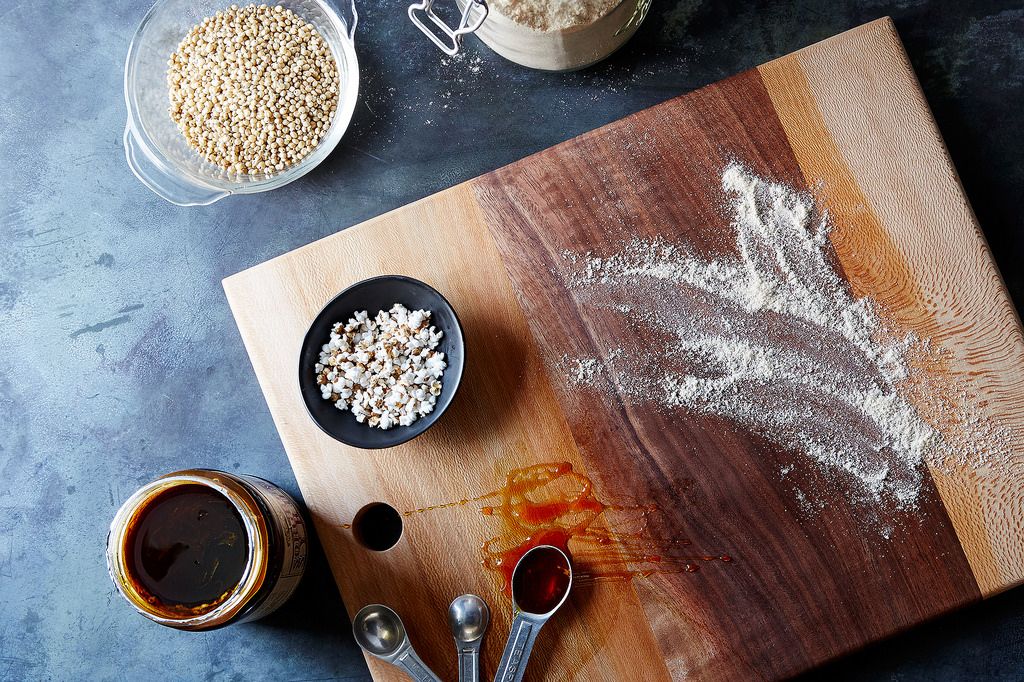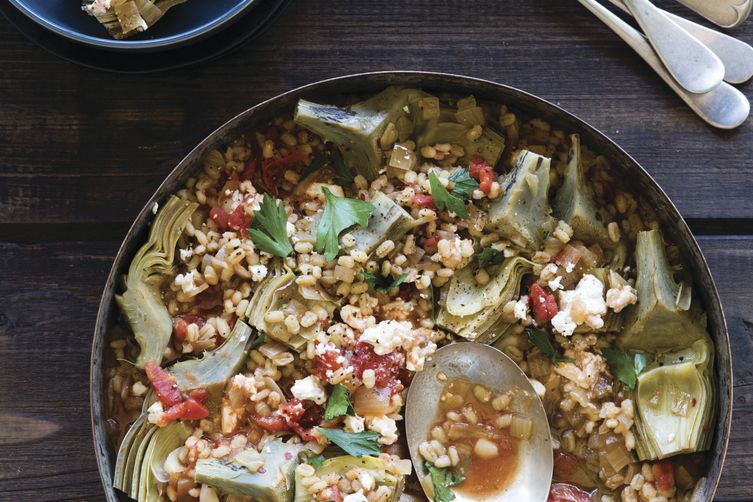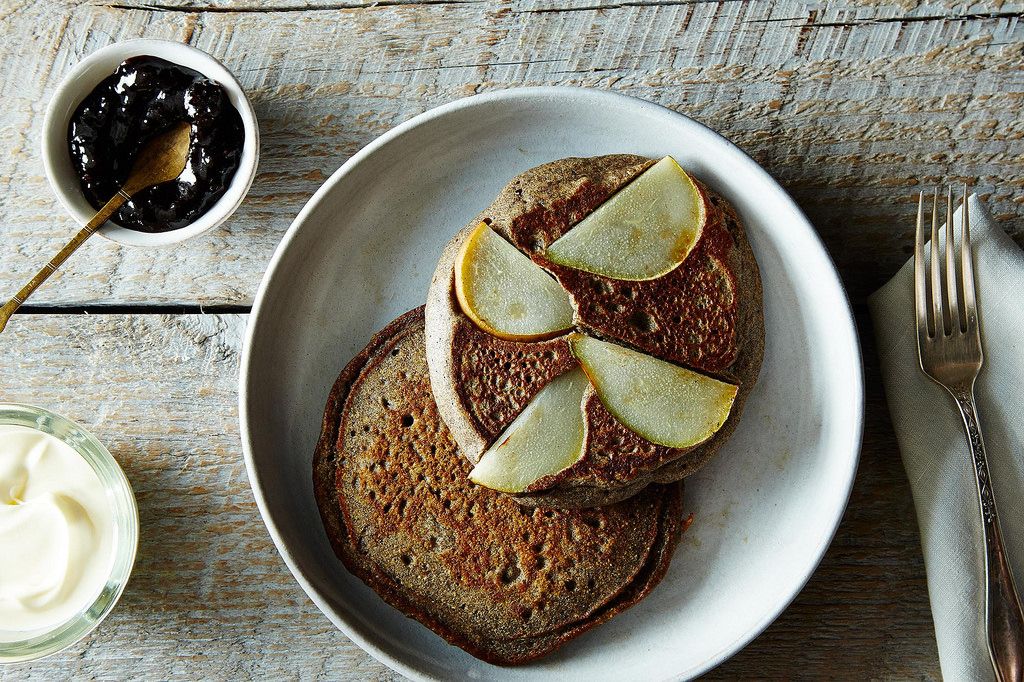Inspired by conversations on the FOOD52 Hotline, we're sharing tips and tricks that make navigating all of our kitchens easier and more fun.
Today: Maria Speck, author of Simply Ancient Grains, tells us what the heck sorghum is and four ways to cook with it.

Thanks to our boundless curiosity for all things gluten free, grains that would've been dismissed years ago are cropping up all over—from restaurant menus to grocery store aisles. You're already stocking up on grains like teff, buckwheat, or millet, so you're wondering why on earth you need to add sorghum to the list.
In my new cookbook Simply Ancient Grains, I highlight this whole grain for its chewy, rich texture and faint aroma that’s reminiscent of corn. It’s so easy to fall in love with, whether in whole, popped, flour, or syrup form.

Sorghum, sorghum syrup, popped sorghum, and sorghum flour.
Here are four ways to enjoy sorghum:
1. The whole grain
What it is: Drought-resistant sorghum has been cultivated by humans for about 8,000 years. It was introduced to the U.S. most likely by African slaves in the 17th century. A staple in parts of India and Africa to this day, it is grown in the U.S. mainly as animal feed and as a source of ethanol fuel. The small bead-like kernels can be ivory-colored or deep red, purple, or brown. The nutrient-rich grain is high in antioxidants, iron, and fiber.
How to store it: Like all whole grains, sorghum should be stored in a cool, dark place, preferably in a container with a tight-fitting lid, like a jar. The whole kernel will keep for several years in a cool dark place in tight-fitting containers.
How to cook it: Be sure to soak whole-grain sorghum overnight, similar to dried beans, for the best outcome. Use 1 cup sorghum to 3 cups water and simmer for 50 to 60 minutes, or until the kernels are tender with a slight chewiness. One of my favorite ways to eat sorghum is with fresh artichokes (or frozen in a pinch)—see this recipe for inspiration.
How to use it: The beauty of sorghum lies in its appealing chewiness and versatility. It is perfect as an addition to a nourishing base for gluten-free salads. You can also toss a handful into soups and stews, or serve the grain warm for breakfast, topped with toasted nuts and a drizzle of your favorite sweetener.
More: The 5 natural sweeteners to have around.
It is best to make a large pot of sorghum on the weekend for later use during a busy workweek. The cooked grain can be kept in a closed container in the fridge for up to 7 days. You can also freeze sorghum in individual portions.

2. Sorghum flour
What it is: This mild-tasting flour with a subtle sweetness adds a nice crumbly texture to baked goods (see below for recommendations).
How to store it: I recommend storing whole-grain flours in jars with tight-fitting lids in a cool, dark place for up to a few months. If you are super organized and have the extra space, the flour does keep longer in the fridge or freezer, but it is not necessary. Always take a whiff and toss out any flour with an off scent.
How to use it: Try sorghum flour first in pancakes, muffins, and waffles to familiarize yourself with its unique character. Start by replacing 1/3 and up to 1/2 of the amount of all-purpose flour in your favorite recipe with sorghum flour. If you want to go all gluten free, replace the all-purpose flour with white or sweet rice flour, as I learned from Shauna Ahern or Alice Medrich. Always allow batters with richly textured whole-grain flours to sit for at least 30 minutes at cool room temperature, or preferably overnight in the fridge. This allows the bran layer to soften and makes for a more appealing outcome.

3. Sorghum syrup
What it is: This traditional Southern sweetener, widely used until the second World War, has seen a small batch revival in the southern Appalachians. Also called sorghum molasses, it is made from a variety of the sorghum plant that has a high sugar content (not to be confused with true molasses made from sugar cane). Sweet sorghum is a member of the grass family. For sorghum syrup, the stalks of the plant are milled between heavy rollers to release their pale liquid, which is then boiled to various shades of coffee-color and viscosity.
Depending on the type, its sweetness can be subdued—reminiscent of rice syrup, with caramel notes and an appealing woodsiness—or it can be pitch-dark and thick enough to cling to the tines of a fork. For best quality, look for 100% pure sorghum syrup.
How to store it: Store just like honey: in a kitchen cabinet. It will last many months. If the sorghum molasses crystallizes, gently heat the jar in a pot of warm water.
How to use it: Just like honey or maple syrup, use sorghum molasses to top waffles, pancakes, cornbread, or baked apples. Hot biscuits with sorghum syrup are a revered Southern breakfast. The syrup can also be used to enhance a bowl of warm porridge made from buckwheat, rolled oats, or cornmeal.

4. Popped sorghum
What it is: Very similar, yet much smaller than the familiar movie theater treat, popped sorghum is like the baby sister of popcorn. Even during popping, they release only a gentle hissing sound compared to regular popcorn. The tiny fluffy seeds the size of a small fingernail are mesmerizing to look at, resembling flower petals.
How to store it: Popped sorghum should be stored in a container with a tight-fitting lid at room temperature. It will last for a week or so, but, just like regular popcorn, it tastes best when freshly made.
How to make it: Pop the small grains in a lidded heavy-bottom saucepan over medium-high heat. (Unlike popcorn, it works best not to use any oil at the start. You can always spray on some oil at the end for flavor.)
How to use it: Enjoy the popped grains as a light snack, maybe with a piece or two of soft-ripened cheese, such as Brie or Camembert. Or sprinkle them onto soups and salads or on top of your breakfast cereal for a delicate crunch. In his book Coi, San Francisco chef Daniel Patterson showcases the popped grain in a recipe with quinoa, almonds, and cauliflower purée. You can find the recipe here.
I was so intrigued by popped sorghum, I did some test runs for how to best go about it. Preheating the pot and letting the kernels briefly sit off the flame allows the kernels to evenly heat, resulting in the least amount of burnt and unpopped sorghum.

Popped Sorghum
Makes about 1 cup
1/4 cup (50 grams) whole grain sorghum
Extra-virgin olive oil, for spraying (optional)
Aleppo pepper or dried red chile flakes, to taste
Sea salt, to taste
See the full recipe (and save and print it) here.
What do you do with sorghum? Tell us in the comments below!
Photos by Mark Weinberg







See what other Food52 readers are saying.